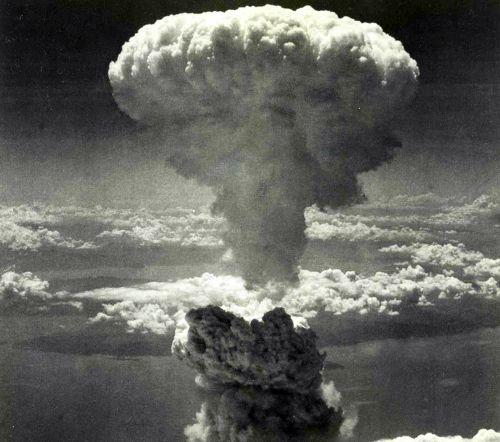On August 6 and August 9 of 1945, warfare changed forever when the United States dropped two atomic bombs on Japan, devastating the cities of Hiroshima and Nagasaki and killing more than 100,000 people.
The attack on the people of Hiroshima at 8:15 a.m. on August 6, 1945, and the second attack on the city of Nagasaki at 11:02 am on August 9 killed and wounded hundreds of thousands of unsuspecting men, women, and children in a horrible blast of fire and radiation, followed by deadly fallout.
In years that followed, those who survived -- the hibakusha -- suffered from the trauma of the experience and from the long-term effects of their exposure to radiation from the weapons.
Before the blast, they were thriving cities. In a flash, they became desolate wastelands.
Seventy-five years later, take a glimpse at the destruction.
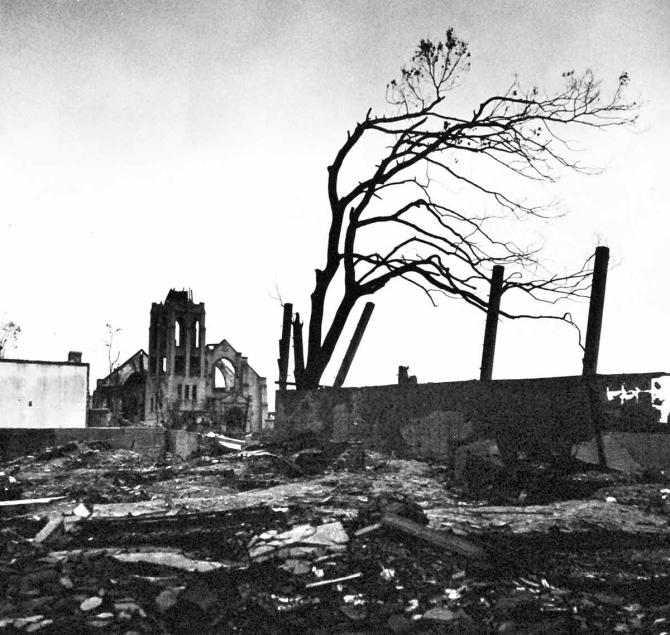
Rubble caused by the atomic bomb blast is seen in Hiroshima, Japan in September 1945. On August 6, 1945, at 8:15 am, the crew of the B-29 bomber Enola Gay dropped the first wartime atomic bomb over Hiroshima, Japan, a bustling regional hub that served as an important military communications center, storage depot and troop gathering area. The bomb, code-named "Little Boy," detonated with an estimated 15,000 tons of TNT, destroying five square miles of the city and directly killing some 70,000 people. Final casualty numbers remain unknown; by the end of 1945, injuries and radiation sickness had raised the death toll to more than 100,000. Photograph: US Navy/Lieutenant Wayne Miller/Reuters

Colonel Paul Tibbetts poses in front of his B-29 Superfortress "The Enola Gay" (named for his mother) in this undated US Air Force handout photo. The Enola Gay is the same plane he piloted when his bombardier dropped the first atom bomb over Hiroshima. Photograph: US Air Force/Reuters

A Japanese soldier walks through the atomic-bomb levelled city of Hiroshima, Japan in September 1945. Archive footage shows pre-bomb Hiroshima as a bustling, thriving city of trilby-topped gentlemen boarding trams, ladies dressed in elegant kimonos, and uniformed schoolchildren walking beneath cherry blossoms overhanging shopping streets. After the blast, rubble and contorted metal stretched almost uninterruptedly to the horizon. Photograph: Lieutenant Wayne Miller/USNR/Naval History and Heritage Command/Reuters

Devastation caused by the atomic bomb seen in Hiroshima, Japan. The radius of total destruction was reportedly 1.6 km. "The impact of the bomb was so terrific that practically all living things -- human and animal -- were literally seared to death by the tremendous heat and pressure set up by the blast," Tokyo radio said in the aftermath of the explosion, according to a report by The Guardian in August 1945. "All the dead and injured were burned beyond recognition. Those outdoors were burned to death, while those indoors were killed by the indescribable pressure and heat." Photograph: War Department/US National Archives/Reuters
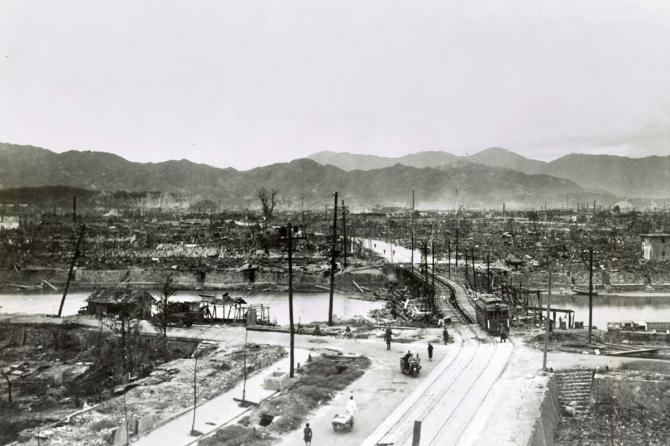
A bridge 4,400 feet (1.34 km) east of the detonation center of the atomic bomb blast is seen in Hiroshima, Japan. When the bomb was dropped on Hiroshima, the first thing people noticed was an "intense ball of fire" according to the International Committee of the Red Cross. Temperatures at the epicentre of the blast reached an estimated 7,000 degrees Celsius, which caused fatal burns within a radius of about 3 km. ICRC experts say there were cases of temporary or permanent blindness due to the intense flash of light, and subsequent related damage such as cataracts Photograph: US Army/Library of Congress/Reuters
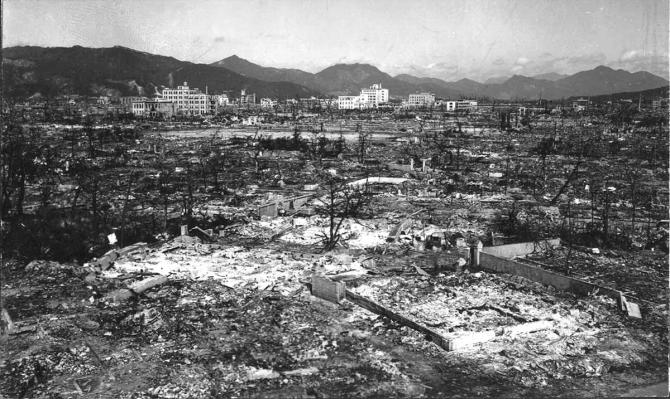
Hiroshima turned into a wasteland after the bombing. Photograph: War Department/US National Archives/Reuters

People walk along a road cleared of the debris caused by an atomic bomb in Hiroshima, Japan. The bombing started intense fires that spread rapidly through timber and paper homes, burning everything in a radius of 2 km. Photograph: War Department/US National Archives/Reuters
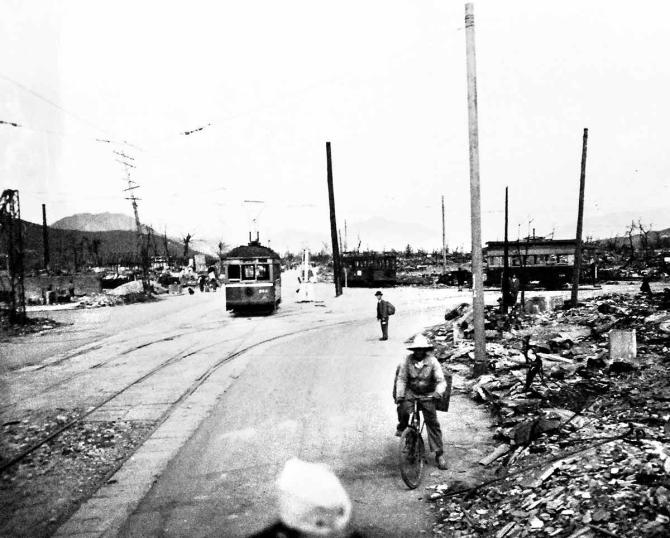
A cyclist rides near a trolley on streets cleared of the debris of the atomic bomb blast in Hiroshima, Japan. It is estimated that as many as 20,000 Japanese military personnel were killed. US surveys estimated that 4.7 square miles of the city were destroyed. Japanese officials determined that 69 per cent of Hiroshima's buildings were destroyed and another 6 to 7 per cent damaged. Photograph: US Navy/PhoM3/C George Almarez/Reuters
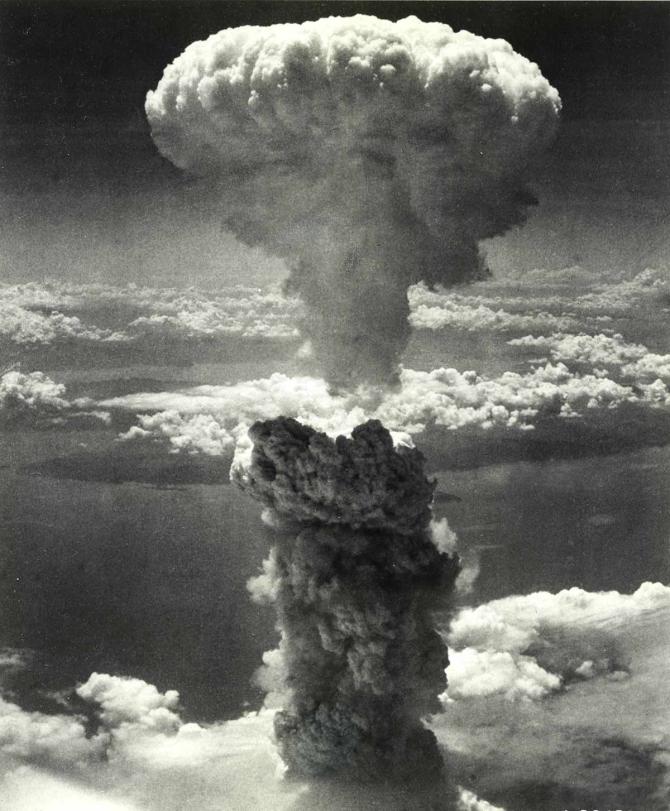
A mushroom cloud rises after an atomic bomb codenamed "Fat Man" exploded after being dropped by a US Army Air Force B-29 bomber over Nagasaki on August 9. Three days after the destruction of Hiroshima, another American bomber dropped its payload over Nagasaki, some 185 miles southwest of Hiroshima, at 11:02 am. Not the original intended blast site, Nagasaki only became the target after the crew found that city, Kokura, obscured by clouds. The Nagasaki explosive, a plutonium bomb weighed nearly 10,000 pounds and was built to produce a 22-kiloton blast. Photograph: US Army Air Forces/Library of Congress/Reuters
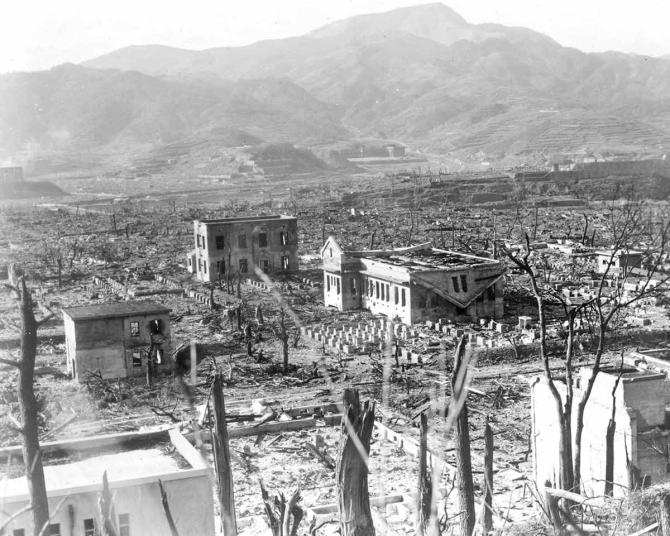
Devastation caused by an atomic bomb is seen in Nagasaki. The bomb's destructive force wiped out about 30 per cent of the city. Some 60,000 to 80,000 people died in Nagasaki, both from direct exposure and long-term side effects of radiation. Photograph: Department of Energy/Lawrence Berkeley National Laboratory/Reuters

Although the bomb was more powerful than the one used on Hiroshima, its effects were confined by hillsides to the narrow Urakami Valley. The radius of total destruction was about 1 mile (1.6 km), followed by fires across the northern portion of the city to 2 mi (3.2 km) south of the bomb. Photograph: Department of Energy/Lawrence Berkeley National Laboratory/Reuters
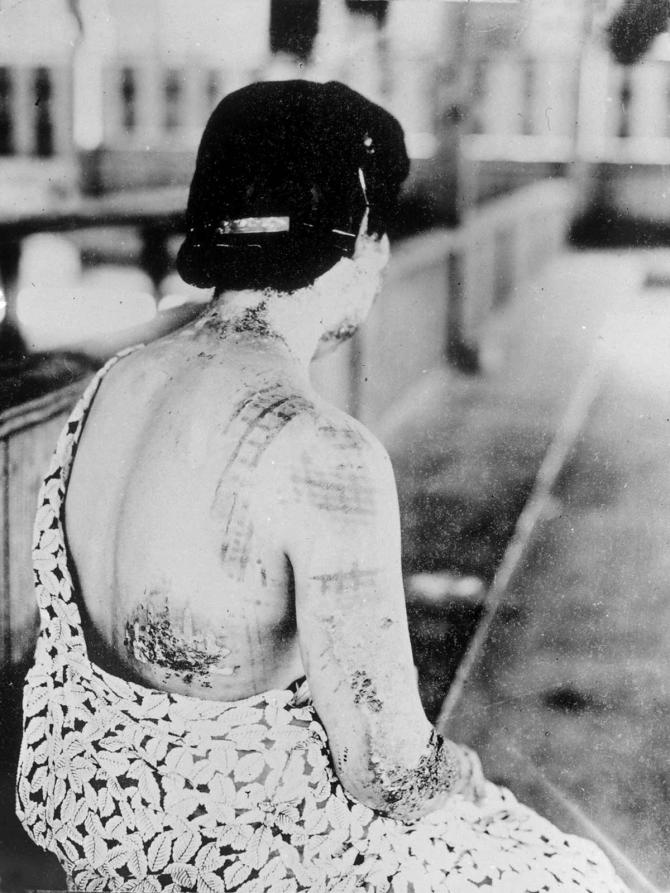
A woman being treated shows her wounds caused by an atomic bomb in Nagasaki. The bomb attacks unleashed radiation that proved deadly both immediately and over the longer term. Radiation sickness was reported in the attack's aftermath by many who survived the initial blast and firestorm. Acute radiation symptoms include vomiting, headaches, nausea, diarrhoea, haemorrhaging and hair loss, with radiation sickness fatal for many within a few weeks or months. Bomb survivors, known as hibakusha, also experienced longer-term effects including elevated risks of thyroid cancer and leukaemia, and both Hiroshima and Nagasaki have seen elevated cancer rates. Of 50,000 radiation victims from both cities studied by the Japanese-US Radiation Effects Research Foundation, about 100 died of leukaemia and 850 suffered from radiation-induced cancers. Photograph: Department of Energy/Lawrence Berkeley National Laboratory/Reuters
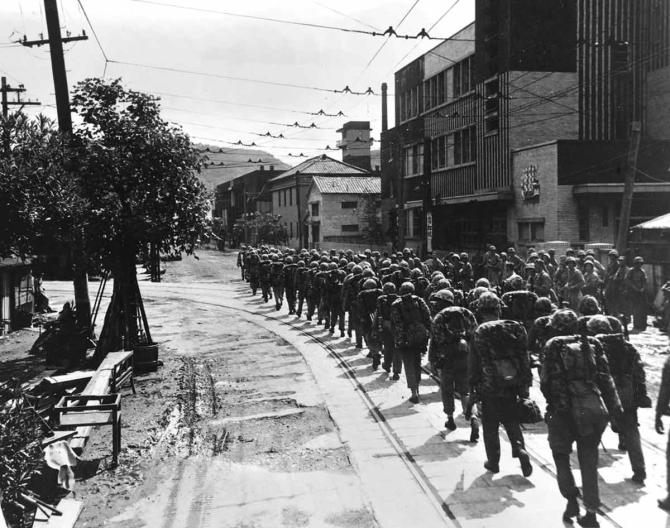
US troops arrive the month after an atomic bomb was dropped on Nagasaki, Japan in September 1945. Japan surrendered to the Allies on August 15, six days after the the bombing of Nagasaki. Historians have debated whether the devastating bombings ultimately saved lives by bringing an end to the conflict and averting a ground invasion. But those calculations meant little to survivors, many of whom battled decades of physical and psychological trauma, as well as the stigma that sometimes came with being a hibakusha. In 2019, Pope Francis met with several hibakusha on visits to Hiroshima and Nagasaki, paying tribute to the "unspeakable horror" suffered by victims of the attacks. In 2016, Barack Obama became the first sitting US president to visit Hiroshima. He offered no apology for the attack, but embraced survivors and called for a world free of nuclear weapons. Photograph: Naval History and Heritage Command/Reuters
